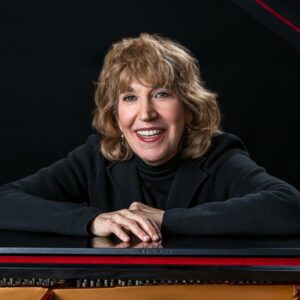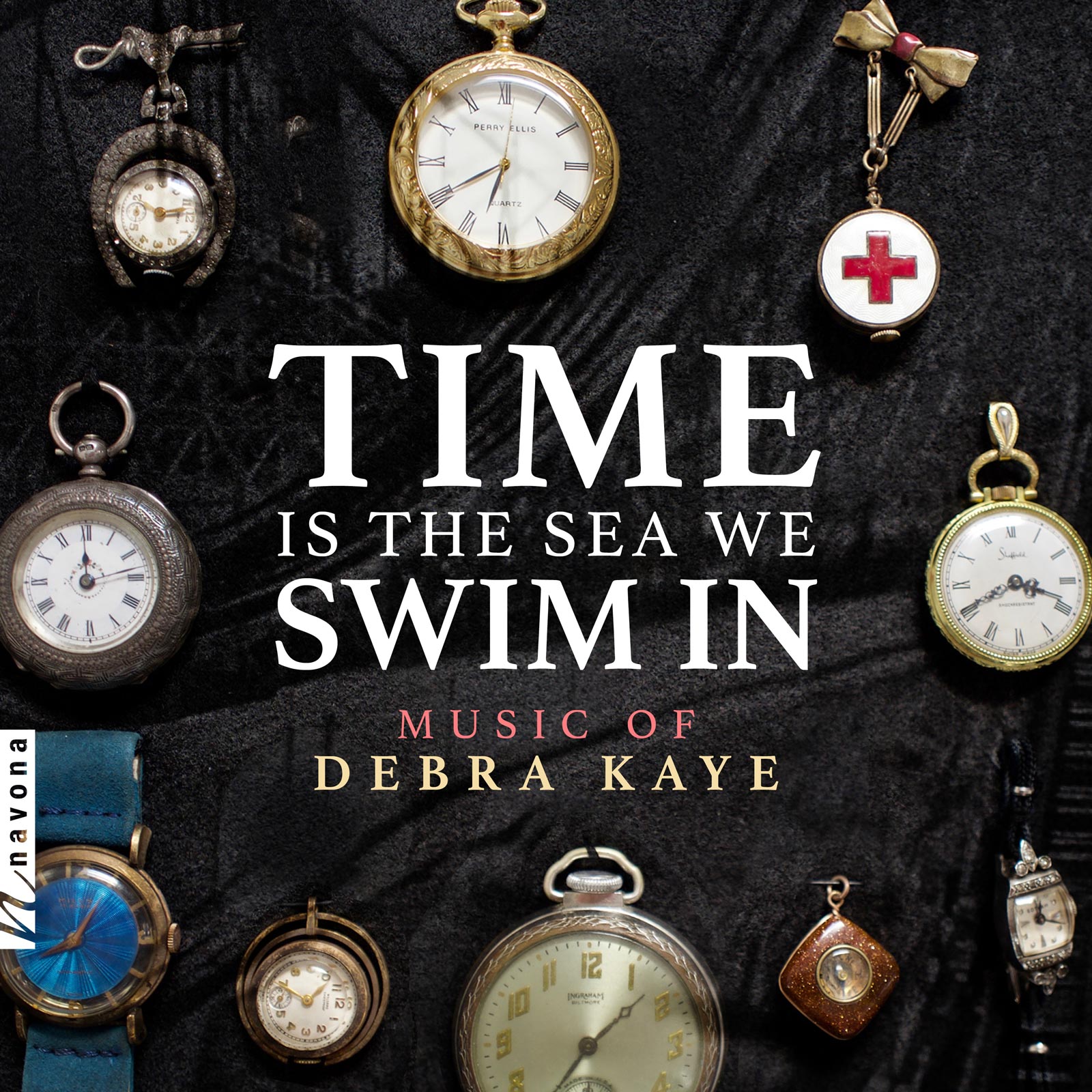Time is the Sea We Swim In
Debra Kaye composer
Following her first Navona Records release, IKARUS AMONG THE STARS, New York-based composer Debra Kaye has curated an ever-varying mix of chamber and solo pieces with TIME IS THE SEA WE SWIM IN. Kaye’s inspirations are seemingly endless, from the improvisatory piano solo At Liberty (1988) where Kaye returns to her roots as a performer, to the jazzy Colossus 1067 (2021) written to accompany Gus Foster’s time-distorting panoramic photograph taken on a roller coaster with a rotary camera; from current events to the poetry of Zen monks, European Romanticism to a philosophical, even metaphysical meditation on time and the creative process.
Kaye’s eclectic collection showcases and reconciles heterogeneous influences by way of a sonic language that is wholly, uncompromisingly her own. Her confident embrace of diverse sounds and styles invite and challenge listeners to join her on this voyage of discovery and dip a toe into this sea that we all swim in.
Listen
Stream/Buy
Choose your platform
Track Listing & Credits
| # | Title | Composer | Performer | |
|---|---|---|---|---|
| 01 | While We Were Sleeping | Debra Kaye | Craig Ketter, piano | 4:32 |
| 02 | Time is the Sea We Swim In | Debra Kaye | Lincoln Trio | Desirée Ruhstrat, violin; David Cunliffe, cello; Marta Aznavoorian, piano | 11:21 |
| 03 | three zen poems: I. Allegro | Debra Kaye | James Nyoraku Schlefer, shakuhachi; David Yang, viola; Hikaru Tamaki, cello | 4:15 |
| 04 | three zen poems: II. Allegro, a little slower | Debra Kaye | James Nyoraku Schlefer, shakuhachi; David Yang, viola; Hikaru Tamaki, cello | 6:06 |
| 05 | three zen poems: III. Andante | Debra Kaye | James Nyoraku Schlefer, shakuhachi; David Yang, viola; Hikaru Tamaki, cello | 5:37 |
| 06 | String Quartet No. 2—Howland Quartet: I. A shimmering idea…you decide to follow | Debra Kaye | Voxare String Quartet | Emily Ondracek-Peterson, Galina Zhdanova - violin; Erik Peterson, viola; Wendy Law, cello | 5:48 |
| 07 | String Quartet No. 2—Howland Quartet: II. The beauty of the dream upon reflection | Debra Kaye | Voxare String Quartet | Emily Ondracek-Peterson, Galina Zhdanova - violin; Erik Peterson, viola; Wendy Law, cello | 6:23 |
| 08 | String Quartet No. 2—Howland Quartet: III. Danza Energico | Debra Kaye | Voxare String Quartet | Emily Ondracek-Peterson, Galina Zhdanova - violin; Erik Peterson, viola; Wendy Law, cello | 8:59 |
| 09 | At Liberty | Debra Kaye | Debra Kaye, piano | 3:49 |
| 10 | Colossus 1067 | Debra Kaye | Dan Block, tenor saxophone; Steve Sandberg, piano; Frank Wagner; double bass; David Meade, drums | 13:40 |
three zen poems
Commissioned by Kyo-Shin-An Arts
String Quartet No. 2—Howland Quartet
Commissioned by the Howland Chamber Music Circle for their 25th Anniversary
Colossus 1067
Commissioned by Gus Foster for his retrospective at the Harwood Museum in Taos NM
Track 1
Recorded live January 21, 2014 at Saint Peter’s Church/Citigroup in New York NY
Presented by the New York Composers Circle
Recorded by Robert Anderson
Tracks 2-5, 9, 10
Recorded April 3-4 and 8-10, 2022 at Oktaven Audio in Mount Vernon NY
Recording Session Producer Judith Sherman
Recording Session Engineers Charles Mueller and Ryan Streber
Recording Session Engineer and Editing Assistant Jeanne Velonis
Piano Technician Daniel Jessie
Tracks 6-8
Recorded live June 9, 2018 at the Howland Cultural Center in Beacon NY
Presented by the Howland Chamber Music Circle
Recorded by Erik Christian Peterson
Mastering Jeanne Velonis and Judith Sherman
Executive Producer Bob Lord
VP of A&R Brandon MacNeil
A&R Danielle Sullivan
VP of Production Jan Košulič
Audio Director Lucas Paquette
VP, Design & Marketing Brett Picknell
Art Director Ryan Harrison
Design Morgan Hauber
Publicity Chelsea Kornago
Digital Marketing Manager Brett Iannucci
Artist Information

Debra Kaye
“A new voice on our horizon is felt and heard with [composer] Debra Kaye” (Classical Modern Music Review). Her visceral music has been described as “an eclectic unfolding of creativity” (Gramophone), it ranges from lyrical to grooving, experimental to coloristic but above all, expressive and deeply felt. Kaye is a hybrid and her music reflects it. Born in Motown, currently living in New York City, she moved to Atlanta at an early age. Her life and music reflect a desire to feel, understand, and to integrate opposites.
Wendy Law wendylaw.com / Erik Christian Peterson violaland.com / Emily Ondracek-Peterson emilyop.com / Galina Zhdanova gigiviolinist.com











